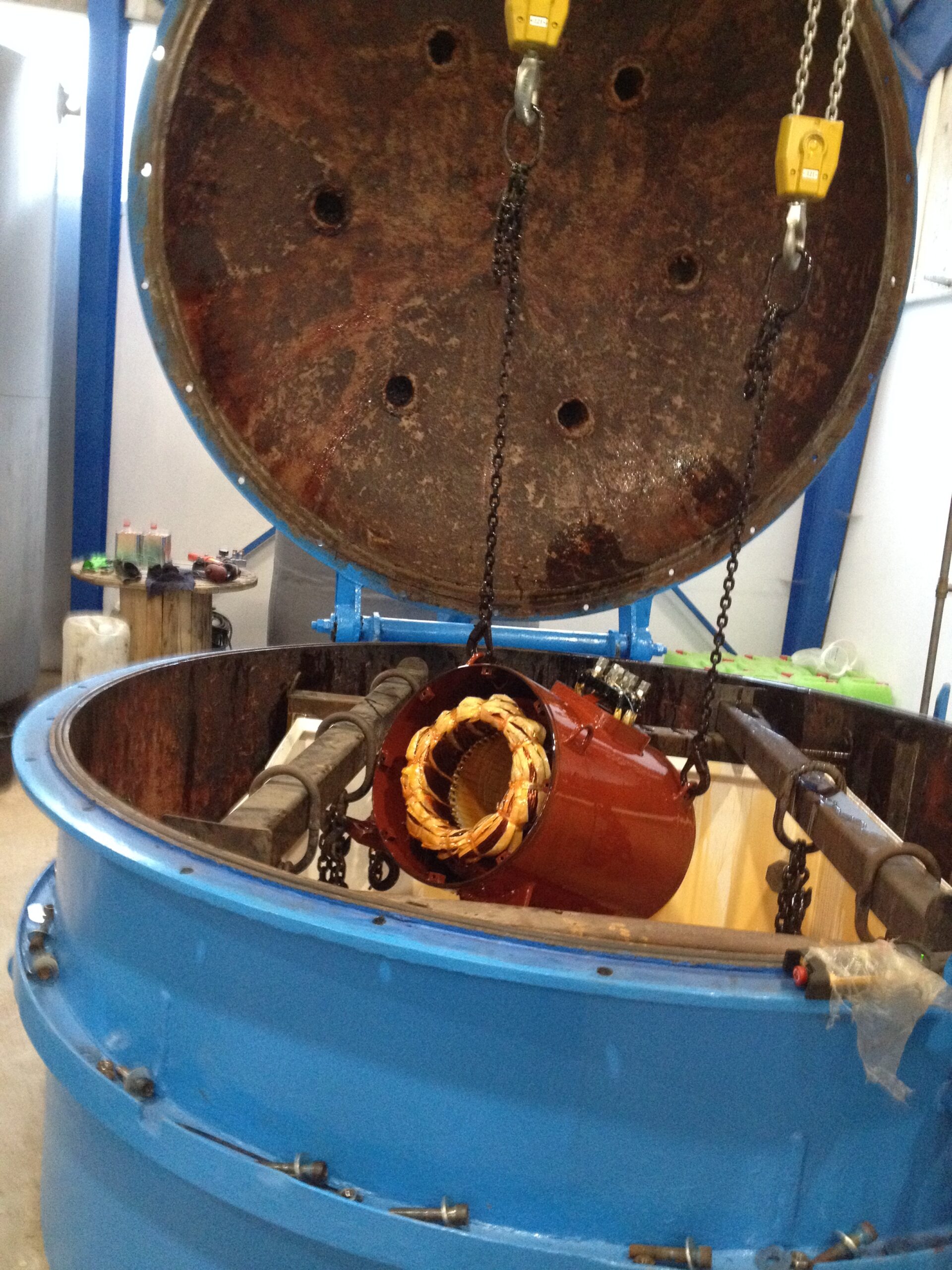There are several ways of determining penetration of epoxy resins through the global VPI cycle. One of the ways is to perform the complete cycle and include ‘sacrificial coils’ held in a faugh-slot, then cut the coil into sections to ensure full penetration. The next is to perform capacitance measurements during the VPI cycle and to monitor the resulting curve, which also allows comparison when similar stators are processed. Optimally, a combination of both methods will increase the confidence that there has been good resin penetration.
If not properly processed, errors such as the one on the left can occur. In this case there were too many layers of tape on the coils and the resin was only able to penetrate through about 90% of the ground wall. The result was that the motor failed within a few weeks of operation. Could this have been avoided? Yes, using both methods. However, it is not unusual for a sacrificial coil to be included without a faugh-slot and most often capacitance is not monitored.
Global Vacuum Pressure Impregnation (VPI) is a process in which ‘green’ coils are placed in a stator, then the whole stator is processed. The process involves a heated stator being placed in a ‘dry’ tank and a vacuum (as close to pure vacuum as possible) being applied for a designated period of time.  The tank is then quickly filled and a pressure applied, usually about 6.2 Bar (90 PSI), and the stator is allowed to ‘pressure soak’ for another designated period of time. At the end of the cycle the resin is drained, pressure is ‘blown off’ and the stator is baked, curing the resin.
The tank is then quickly filled and a pressure applied, usually about 6.2 Bar (90 PSI), and the stator is allowed to ‘pressure soak’ for another designated period of time. At the end of the cycle the resin is drained, pressure is ‘blown off’ and the stator is baked, curing the resin.
The vacuum cycle causes most air and moisture to escape from the coils which also creates a ‘sponge’ as some of the air is still trapped, but expanded. When the varnish is in the tank and the pressure is applied, any remaining air shrinks and draws the resin through the tapes and into the coil. In the picture on the right, the tank on the left is the resin storage tank and the tank on the right is the vacuum chamber. Vacuum pumps, controls, dryers, and refrigeration systems are included in the system.
Most VPI system manufacturers and resin suppliers provide an estimated time chart for each part of the cycle based upon averages. However, if the cycle is not long enough, and the sacrificial coil shows that the resin has not penetrated, then a decision must be made: can we continue a cycle on the stator and hope that it penetrates? Do we risk the present conditions of the stator, if it is under 6,000 Volts? Or, do we scrap the winding and start over?
Through a literature review we found that there is limited information on capacitance and winding fill. However, we do know that it is a common practice in many manufacturers and repair organizations that use global VPI. Without literature and published research, there is limited understanding of what constitutes a good capacitance set for global VPI. During 2010-2012 we monitored over 15 stators ranging from 300 horsepower to 3.5 MW with rated voltages of 2300 to 4160V and compared the condition of the coils to the capacitance curves. The objective was to use the capacitance to determine the final soak and not the designated times where the total time would be a minimum of the published time plus the capacitance curve results.
The resulting curve appeared as (click to enlarge):
This was fairly typical of the stators tested. We did note that in all successful cases the ending capacitance was higher than the starting capacitance. The sacrificial coils were sectioned and a microscope used to inspect the ground wall and conductor insulation. Particular attention was given to bends and around connections.
We were able to conclude that this additional monitoring system on the global VPI is an excellent method for increasing confidence in completed stators.




